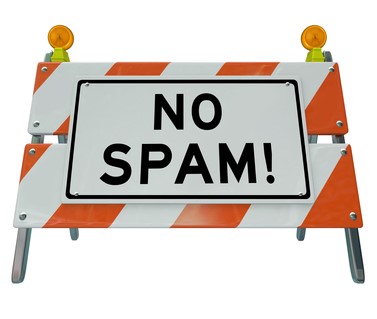 Your business relies on electronic marketing to reach today’s consumer. You keep in touch with your clients via a user-friendly website, and effective email marketing. So, whom are you allowed to reach out to with your newsletter?
Your business relies on electronic marketing to reach today’s consumer. You keep in touch with your clients via a user-friendly website, and effective email marketing. So, whom are you allowed to reach out to with your newsletter?
When you are in Canada (or send email to residents), the Canadian Anti-Spam Law (CASL) requires you to gain affirmative consent to send an email. Effective July 1, 2014, you can no longer send any messages without an opt-in by the subscriber.
The CASL is one of the toughest anti-spam laws in the world. So, how do you navigate an ocean of electronic legislation?
Consent flows downstream.
Carve a stream for your customer’s consent and keep your clientele in
flow. Consent falls into two pools:
Express consent – Ensure recipients of your emails actually want to
receive them. Create a user-friendly form on your website for subscribers to request up-to-date email marketing messages from your team. Express consent is good until revoked by subscriber.
Implied consent – Clients you currently hold a business or non-business relationship with are still good candidates for marketing. A business relationship is with the client who has recently made a purchase. A non-business relationship may be with someone who volunteers for your non-profit. Implied consent expires after two years, so meanwhile, seek express consent.
Keep tight records of express and implied consent for all your subscribers. The law requires proof of consent in the event of a complaint.
Up the creek without a paddle…
Do not get dunked in violations. Fines for a breach of anti-spam laws get deep – $1,000,000 for individuals and close to ten times that for companies.
Laws cascaded in on July 1, 2014. With mere months to evaluate electronic marketing practices, many businesses made changes in procedure and succumbed to CASL.
Limitations on unsolicited installation of computer programs and software will come into force on January 15, 2015.
Final provisions on private right of action are enforceable July 1, 2017. Use
the transition time to find flow with current customers and create a flood of new ones.
Weather the storm.
Overall, the law prohibits any commercial electronic messages sent without the recipient’s permission, anything which sends an on-line user to a site without consent, and any installation of software without explicit consent of the computer’s owner.
Get consent from customers initially and in each subsequent message too, to be safe. Identify yourself in every email and include contact information (good for at least 60 days). Include an unsubscribe mechanism in each message.
The Canadian Federation of Independent Business (CFIB) predicts a transition period while many small businesses become aware they have obligations under the legislation.
As anti-spam laws carve their way into our electronic landscape, we intuitively change course. Change can feel like rough waters, but set your customer’s compass correctly and its smooth sailing.
Visit
WhatCounts.comfor more details on Canadian Spam Laws.